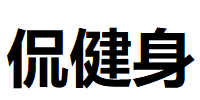How Deep Should You Squat? Essential Knowledge You Should Know
How Deep Should You Squat? The optimal squat depth depends on your training goals, joint mobility, training experience, and physical condition.
Common Squat Variations
1. Partial Squat (Shallow Squat): Thighs descend to about 45 degrees relative to the ground. Suitable for rehabilitation training or individuals with limited joint mobility.
2. Parallel Squat: Thighs lower until parallel to the ground, with hips and knees at the same height. This is the standard depth for most fitness training.
3. Full Squat (Ass-to-Grass): Hips drop below knee level with glutes near ankles, commonly used by weightlifters and powerlifters.
Depth Selection by Training Goals
1. Muscle Growth: Parallel squat or slightly below parallel (hips slightly lower than knees), balancing muscle stimulation and safety.
2. Strength Gains: Powerlifters typically use full squats (hips below knees) to meet competition standards; general trainees should opt for parallel squats.
3. Functional/Explosive Training: Weightlifters require full squats to enhance range of motion and lower-body power.
4. Beginners: Start with partial squats and gradually increase depth to avoid excessive joint stress.
Key Considerations
• Those with knee injuries should avoid excessive knee flexion (beyond 120° may increase cartilage pressure).
• Maintain neutral spine alignment - avoid rounding or hyperextending the back.
• Keep knees aligned with toes to prevent inward collapse.
• Distribute weight evenly across midfoot, keeping heels grounded.
Common Myths
Myth 1: "Hips must touch ankles" for proper form.
Reality: Full squats aren't suitable for everyone. Forcing depth may cause lumbar or knee compensation.
Myth 2: "Knees shouldn't pass toes."
Reality: Moderate forward knee movement is natural when maintaining proper alignment, as individual anatomy varies.
Myth 3: "Deeper squats are always better."
Reality: Exceeding your natural range of motion increases injury risk. Train within your capabilities.
Practical Recommendations
• General trainees: Prioritize parallel depth for safety and effectiveness.
• Advanced lifters: Attempt full squats only with pain-free, stable movement.
• Special populations: Those with joint limitations or recovering from injuries should prioritize movement quality over depth. Box squats can be helpful.
Final Verdict
Optimal squat depth should align with individual capabilities, maintaining proper form without pain. Quality always supersedes arbitrary depth standards.

微信扫一扫打赏

支付宝扫一扫打赏
健身最难的就是坚持,加博主微信:jsnrjx,邀请你进健身打卡群。与200多位健友一起健身打卡,从此告别三天打鱼,两天晒网。


